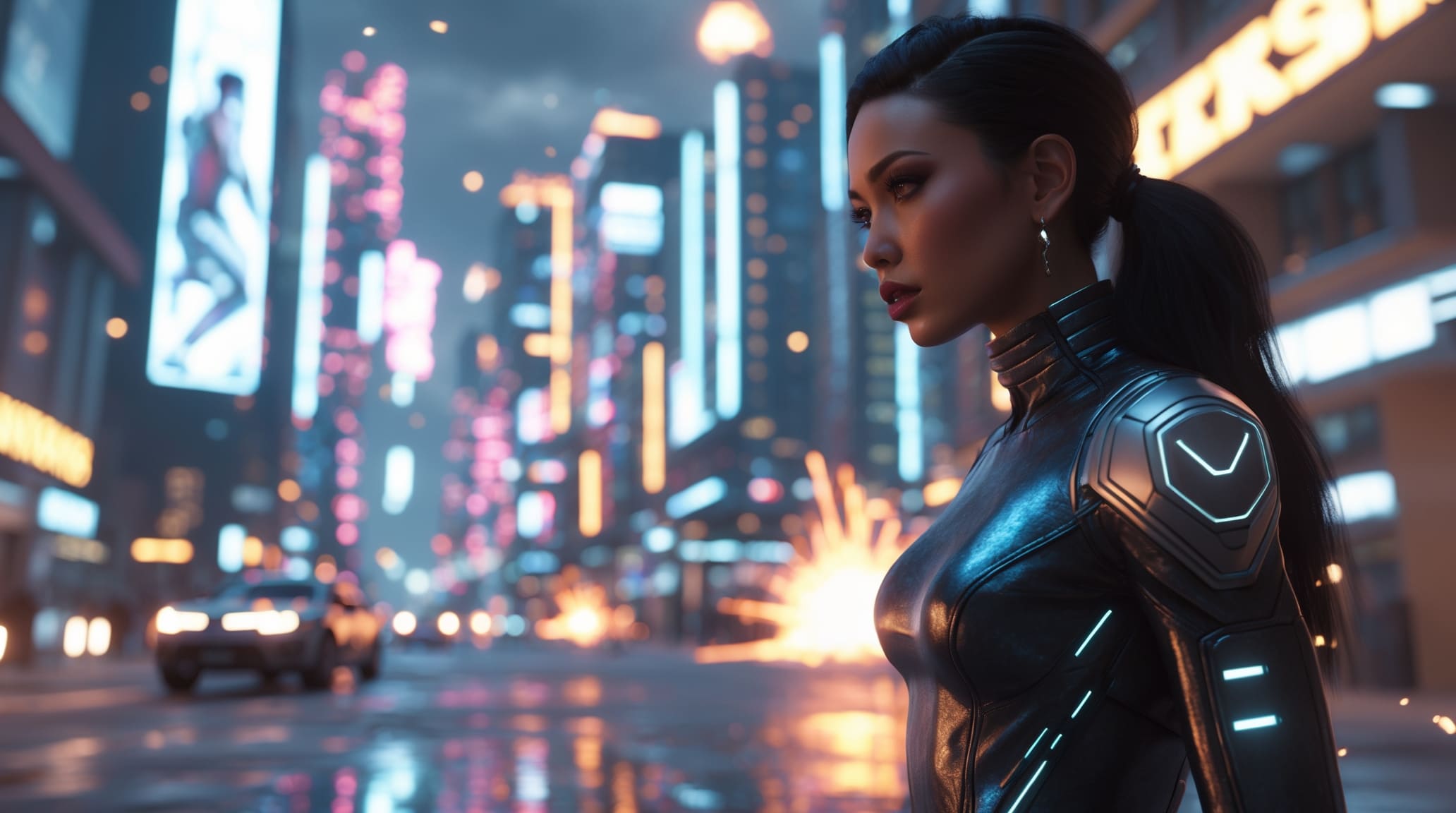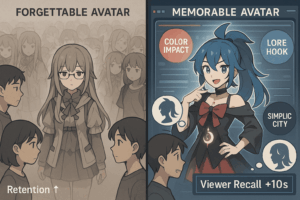The world of graphic novels is going through a visual revolution. No longer confined to static panels or flat illustrations, today’s creators are tapping into the power of 3D models and game engines to produce storytelling that rivals blockbuster films. With an evolving blend of styles, textures, and digital scenes, the line between a page and a screen is getting blurrier. Let’s explore how 3D modeling is not just enhancing the medium—it’s completely transforming it into something cinematic, dynamic, and unforgettable.
From Flat Panels to Full Worlds
Traditionally, graphic novels relied on hand-drawn art, inked frames, and vivid color palettes to build immersive worlds. While this form is still celebrated, today’s readers demand more interactive and animated experiences.
Creators are now using 3D models to design scenes that feel alive—complete with shadows, lighting, depth, and camera movement. It’s like reading a comic with the realism and drama of a movie. Think of it as a blend of illustration and animation, crafted for the modern eye.
How Game Engines Bring Graphic Novels to Life?
The secret weapon behind this transformation? Game engines.
Game engines like Unreal Engine or Unity are no longer exclusive to developers building the next viral game. They’re now tools for artists to render detailed projects, animate characters, control environments, and even add real-time effects to their graphic novels. By importing 3D models into game engines, creators can stage scenes with cinematic lighting, animate expressions, add weather effects, and control every element—just like a film director.
The Role of 3D Models in Storytelling
At the heart of this revolution are 3D models. These digital assets can represent anything: characters, cars, cities, weapons, food, or fantasy creatures. Artists can browse vast online libraries to download models in formats like OBJ, STL, or MAX, ready to be animated or customized. These models are not just static files—they come with textures, styles, and eyes that blink, muscles that flex, and costumes that move. They breathe life into a still world and give graphic novels a new level of depth and dimension.
Building a Cinematic Scene: The Creative Process
Step 1: Concept and Collection
Everything starts with a strong concept. Writers and illustrators first map out a scene or moment. Then, they browse online libraries to find the perfect 3D assets. From detailed character models to futuristic vehicles or dystopian landscapes—there’s a collection out there for every genre and category.
Step 2: Blend and Build
Next comes the magic—creating the scene inside a game engine or software like Blender. This is where assets are assembled, scaled, and textured. Artists blend different elements to achieve a seamless style, adjusting lighting and shadows to create dramatic impact.
Step 3: Animate and Add Emotion
With tools that rival animation studios, creators animate movement, facial expressions, and background elements. A character walking across a battlefield? A chase between cars through neon-lit alleys? All is possible, thanks to 3D tools and rigging features.
Why Creators Are Proud to Use 3D?
3D isn’t just cool – it’s practical. Artists working on tight deadlines can complete complex projects faster using reusable 3D assets. Many creators proudly announce their use of 3D, showcasing their ability to mix old-school storytelling with cutting-edge tools.
They can recreate the same scene from multiple angles, or easily make changes without redrawing everything from scratch. And when it comes to building entire worlds, nothing beats the power of 3D models.
Different Categories of Graphic Novels Benefiting from 3D
Graphic novels across multiple categories are tapping into 3D:
👉 Sci-fi & Fantasy: Rich environments and out-of-this-world textures: To begin with, sci-fi and fantasy genres thrive on imagination—3D models bring alien worlds, mythical beasts, and futuristic tech to life with stunning textures. As a result, creators can transport readers into visually rich, otherworldly dimensions that feel tangible.
👉 Action: Explosive scenes, dynamic character poses, and epic cars: Meanwhile, action stories benefit from explosive visuals, intense movement, and vehicles that leap off the page. With this in mind, 3D modeling captures energy and motion that traditional frames struggle to match.
👉 Romance & Drama: Expressive eyes, subtle movement, and natural settings: In contrast, romance and drama focus on emotion—3D tools allow for expressive faces, soft gestures, and realistic backdrops. Consequently, even a quiet glance or touch can feel cinematic and deeply moving.
👉 Mystery & Thriller: Realistic lighting and cinematic suspense: On the other hand, mystery and thriller genres demand mood and tension—3D environments shine with controlled lighting, shadow play, and suspenseful angles. Therefore, creators can guide readers through twists and turns with the precision of a film director.
Regardless of style, 3D helps creators inject emotion and realism, without losing artistic control.
3D Models for Graphic Novel Creators: What You Can Find Online?
There are countless online platforms where artists can download free and premium 3D models. These include:
👉 Characters with realistic anatomy and clothing: These 3D models capture lifelike body proportions, facial features, and natural movement. Outfits can be fully customized to match different eras, genres, or personalities.
👉 Vehicles like sports cars, tanks, or spaceships: From sleek supercars to futuristic spacecraft, these models come packed with high-detail textures and functional design. They’re perfect for action scenes, world-building, or dynamic storytelling.
👉 Interiors such as cafes, bedrooms, or labs: 3D interiors set the mood and tone of a scene, offering fully furnished and textured spaces. Creators can build everything from cozy apartments to high-tech laboratories with ease.
👉 Nature elements including trees, rocks, and water: Nature assets help ground the story in realism or fantasy with high-quality organic details. Whether it’s a quiet forest or a roaring river, these elements bring atmosphere and balance.
👉 Props like weapons, furniture, and gadgets: Props add layers of context, style, and interactivity to scenes. Each item is modeled to scale and styled to fit specific genres—from sci-fi tech to vintage furniture.
👉 Food models for lifestyle and slice-of-life scenes: Hyper-detailed food models make everyday scenes feel warm and relatable. Perfect for kitchen setups, romantic dinners, or café sequences, these models add texture and life.
With the right library, artists can fill an entire page with photorealistic detail.
Why Readers Love the 3D Blend?
Readers today are used to high-end animation, game graphics, and immersive media. The cinematic blend of 3D and storytelling is something they naturally gravitate toward. When you open a digital graphic novel and see animated smoke rising, raindrops falling, and characters whispering with real lips – it doesn’t feel like reading. It feels like entering a story. That’s the true life 3D brings to the format.
The Future: Graphic Novels as Interactive Games?
With game engines at the center, the future may blur even more lines between graphic novels, video games, and animated films. Imagine a reader browsing a page, then clicking a character to view their backstory, or changing the scene outcome through choices—just like a game. As tech improves, creators will have even more power to build, blend, and elevate their art to stunning new heights.
Final Words
3D modeling is not replacing traditional art—it’s creating new possibilities. It empowers artists, excites fans, and brings graphic novels closer to cinematic storytelling than ever before. Whether you’re looking to download ready-made models, build from scratch, or explore new projects, one thing is clear: the age of 3D storytelling in comics is here—and it’s only getting better. Whether it’s for a graphic novel, a game engine, or a cinematic scene, 3DAiLY helps you create high-quality 3D models—fast, affordable, and tailor-made for your creative vision. Explore our 3D model library or get your custom models built with speed, precision, and creativity at 3DAiLY.



